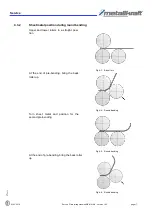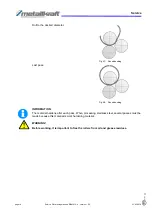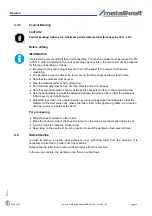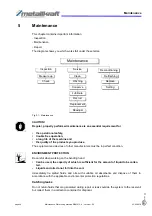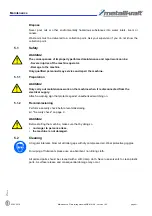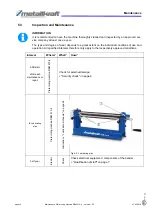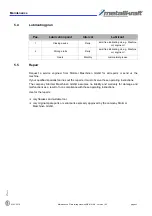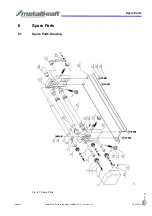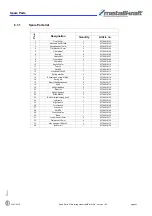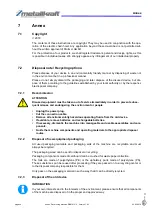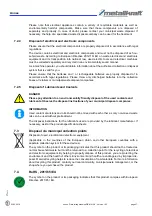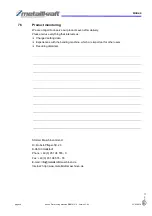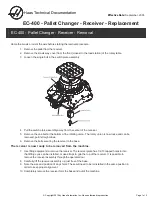
Service
03.05.2018
page 19
Service Plate rolling machine RBM 610-8 ; Version 1.05
©
2018
GB
4.3.3
Conical Bending
CAUTION!
Conical bending reduces the maximum permissible material thickness by 30% - 50%.
Before editing
INFORMATION
Conic bending is more difficult than normal bending. The machine power must be reduced to 0%
to 50% in order to determine the conical bending capacity. Also, the machine must be prepared
for this type of bending as follows:
Important in conical bending is that you first cut the sheet to the required size before
machining.
The workpiece must be able to be fed in evenly from the upper and lower feed rollers.
Note that the material must be level.
Free the material surfaces from dirt and oil.
The material ends must be free of chips, chisels and burnt residues.
Note that burned material is harder at the points of separation than in the remaining area.
Use the handwheels to adjust the distance between the pickup roller so that the workpiece
retracts evenly and continuously.
Adjust the rear roller in its angular position by turning the assigned handwheels so that the
diameter of the workpiece cone makes the roller closer to the tightening rollers. As a result, a
narrower radius is created at the bend.
For processing
Slide the sheet between the two rollers.
Place the narrower side of the sheet metal part on the side where the smaller radius is set.
Turn the crank to create the conical bend.
Depending on the degree of bending required, repeat the workpiece feed several times.
4.4
Swivel device
In order to remove a closed, bent workpiece (e.g., cylindrical tube) from the machine, it is
necessary to pivot the top roller out of the machine.
Release the top roller lock to remove the workpiece from the machine.
In the swung out state, the workpiece can then be pulled down.













